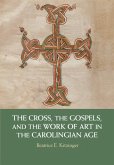Byzantine imperial imagery is commonly perceived as a static system. In contrast to this common portrayal, this book draws attention to its openness and responsiveness to other artistic traditions. Through a close examination of significant objects and monuments created over a 350-year period, from the ninth to the thirteenth century, Alicia Walker shows how the visual articulation of Byzantine imperial power not only maintained a visual vocabulary inherited from Greco-Roman antiquity and the Judeo-Christian tradition, but also innovated on these artistic precedents by incorporating styles and forms from contemporary foreign cultures, specifically the Sasanian, Chinese and Islamic worlds. In addition to art and architecture, this book explores historical accounts and literary works as well as records of ceremonial practices, thereby demonstrating how texts, ritual and images operated as integrated agents of imperial power. Walker offers new ways to think about cross-cultural interaction in the Middle Ages and explores the diverse ways in which imperial images employed foreign elements in order to express particularly Byzantine meanings.
Dieser Download kann aus rechtlichen Gründen nur mit Rechnungsadresse in A, B, BG, CY, CZ, D, DK, EW, E, FIN, F, GR, HR, H, IRL, I, LT, L, LR, M, NL, PL, P, R, S, SLO, SK ausgeliefert werden.









